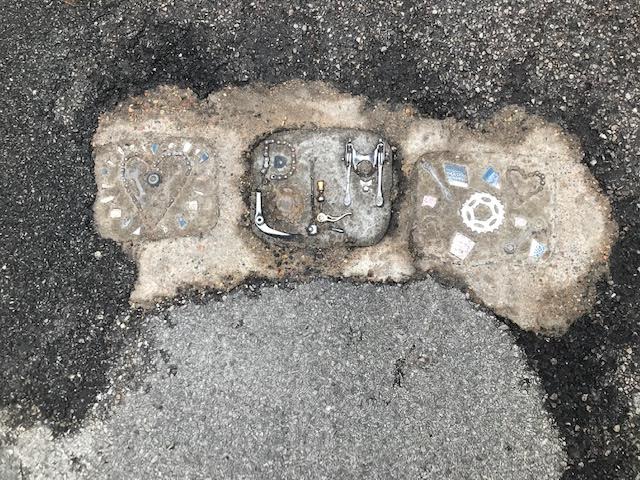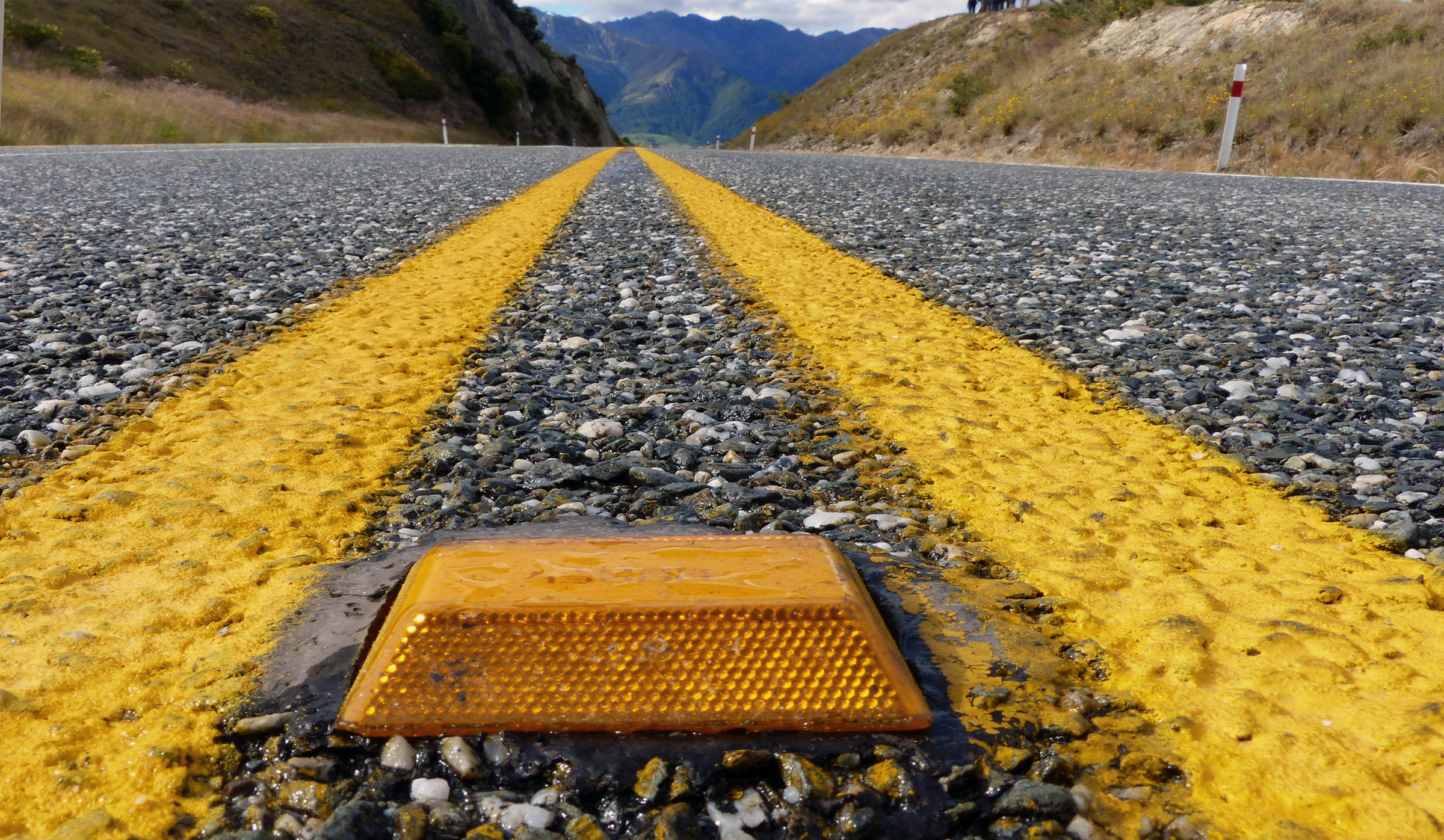Freeze-thaw cycles are best known for how they undermine pavement integrity. But when things get really cold, asphalt cracks up in a different way. Recently, winters in much of the US have been warmer and wetter, particularly in the upper Midwest, than in previous years. But slicing a cold knife into these seemingly mild winters on an almost annual basis are the polar vortexes, the deep penetration of Arctic air…
Read More
The wild popularity of e-bikes means people are getting out of cars and onto two-wheels. It’s an environmental plus, but safety issues – including potholes – need to be addressed. There is a new user of asphalt in American cities and towns, and it’s not just electric cars. Even as the 4-wheeled EVs are growing exponentially in popularity and use, the 2-wheel version of electrified travel is making its own…
Read More
It’s tempting to get out the hog and go for a long ride when the warm weather finally arrives. But potholes might not yet be repaired – which can be expensive, and deadly, for motorcyclists. In the summer of 2022, a Philadelphia policeman was seriously injured when the motorcycle he was riding flipped after hitting a pothole. Now, in the spring of 2023, motorcyclists in the San Diego area are…
Read More
Spring is pothole season so you are seeing them everywhere. So why are there more potholes on residential and commercial streets than interstate highways? There is a lot of money in potholes, but don’t count that as a good thing. The money goes to people other than the driver who has the unfortunate experience of hitting one with their car. Repair shops will sell or repair more tires ($100-$300), wheel…
Read More
Unusual weather conditions bring a raft of road crevasses from San Diego to Minneapolis and just about everywhere else – along with accidents and injuries. Is there something about the winter of 2023 that is extraordinary, pothole-wise? That might well be the case, but not for the usual reasons. Typically, brutal and extended cold and snowy periods give way to potholes in the spring, beginning in February in southern states,…
Read More
Extreme weather creates future potholes. Compounding this is how roads in the South might suffer more because the asphalt formulations are made for heat. The Christmas week arctic blast – bomb cyclone Elliott, as it was called – across the entire midsection and East Coast of the US played havoc on transportation in many ways. Flight cancellations and advisories to stay off the roads were among them. But the deep…
Read More
The top ten states, starting with the worst potholed roads, are: Michigan, Indiana, Rhode Island, Washington state, Vermont, Pennsylvania, New Jersey, Ohio, Tennessee, and New York.
Read More
It’s pothole repair season, from coast to coast and road crevasse to street pit. And lest anyone think their city, county, or state is more afflicted than any other, we provide for you a snapshot of what asphalt looks like in the spring of 2022: “This year’s pothole season one of the worst in recent memory,” reports TBNewsWatch.com. Owing to “a hard winter on our roads with the continual freeze-thaw,”…
Read More
A heavy body, long travel suspension, and wide sidewall tires hold up best to bumps and dips in the road. Big truck, small sidewalls Where it comes to potholes and pothole-induced damages to vehicles, we generally consider the pothole to be the problem that needs fixing. Ultimately, eliminating potholes will benefit all users of the roads, from the smallest Fiat to the largest 18-wheel semi-truck. But due to the ubiquity…
Read More
It’s that time of year, that month that is the dividing line between winter and spring, when hope springs eternal but car shocks might not. March is the month when temperatures fluctuate above and below the freezing mark (32ºF). Of course, the further south one goes that is more above freezing than below, but the fact remains that those oscillations are what matters most. Because simple water, in its expansions…
Read More
It’s that time of the year: If the black ice doesn’t get you, the potholes might. And so might the ice bumps. Ice bumps? Well, yes – but to be clear ice bumps or ice mounds should not be confused with black ice, those frozen areas of the roadways that, thanks to a combination of rapid freezing of snow or sleet, are so clear and flat because they lack bubbles…
Read More
Asphalt is cheaper to install, and easier to repair, than cement concrete. But both require regular maintenance to ward off deterioration – including potholes. According to the Federal Highway Administration (FWHA), about 94 percent of all surfaces used for transportation – roads, streets, and highways – are paved with asphalt. The characteristics and properties of bitumen-based asphalt, also known as blacktop, are quite different than those of concrete, even if…
Read More
Why aren’t there any driveways in pictures of middle class homes from the 1890s? Because they didn’t have cars! The rest is history. Before anyone considers their next blacktop driveway repair project, it might help to consider the history of driveways themselves. As well as the old jokey question, “Why do we drive on parkways and park on driveways?” The answer to that question is simple: language evolves. The invention…
Read More
No driveway lasts forever. But just like with human health, the wellbeing of asphalt pavement depends on attentive maintenance: resealing, resurfacing, and ultimately repaving. New homeowners learn a hard lesson, gradually, as the home and its surroundings age and deteriorate. It depends on the components of the house, garage, driveway, and landscaping elements – especially the quality of materials and products – but with time a new roof, new paint,…
Read More
The 2021 US infrastructure bill leapt closer to becoming law in August with a strong vote of support from the Senate. So what might it mean for pothole repair? The obvious benefit of the $1.2 trillion Bipartisan Infrastructure Framework (a working title) is in how much will be dedicated to fixing roads and bridges. While a version of the bill has yet to be voted on in the House, and…
Read More
Potholes from freezing weather aren't the only thing that can go wrong with asphalt and concrete roads. The lessons from heat dome regions should be part of engineering, policy, and infrastructure planning. There are two misperceptions about road pavement that could be increasingly problematic in the years to come. They are: All asphalt is made the same (it’s not) The only threats to roads are the freeze-thaw cycles that cause…
Read More
The national ironman triathlon championship race is in Oklahoma this month. But just three months after harsh winter storms, literal potholes must be fixed. When cities host triathlons, marathons, criterions, and other mass outdoor athletic events, it’s a smart draw for those municipalities to welcome visitors. The athletes and their families and friends often spend a weekend – as well as their tourist dollars at hotels, restaurants, and local attractions.…
Read More
A bump in the road can be deadly to bikers, motorcyclists, scooter riders, and anyone in 2-wheeled vehicles. The need to fill potholes is greater than ever. The British magazine Cycling Weekly, in a concession to the poor quality of many roads in the UK, offered up an article in 2017 on how to bicycle safely in the presence of potholes. Among several techniques, one suggestion was to “bunnyhop,” a…
Read More
"Improve the condition of the roads. Apart from it leading to accidents and deaths, now we hear from health experts that it is leading to dengue and malaria.”
Read More
Where water flows to is where pavement is most likely to fail. So in areas where water stands still there may well be potholes lurking under the puddles. In the balance of life, there are bridges and there are underpasses. On the former a car will go up and over and the latter it’s down and through. Simple stuff, right? It also explains why, simply, there tend to be potholes…
Read More

Injurious falls occur more often outside the home than in. Artists in Chicago are filling potholes with bicycle parts – perhaps reducing pothole dangers. In this particularly cold and miserable winter of 2021, after the snow is sufficiently scraped or melted away from the streets of Chicago’s Rogers Park neighborhood, there are some filled-in potholes from late 2020 that should get more attention than road repairs typically do. That’s because…
Read More

It appears road maintenance, which should mean fixing small cracks before they become deadly potholes, will be prioritized.
Read More

Potholes cause costly damage to car wheels, suspension and steering systems. Tire blowouts are most common, but tougher new tire material offers better protection. Is there such a thing as a pothole-proof car tire? One Finnish company believes it can be done – so much so they are introducing a very resilient product in North America made of the same material as used in bulletproof vests. It comes with an…
Read More

Since the early 20th century, markings and reflectors have helped guide our way and keep us safe while driving. Too bad potholes don’t come with such warnings. While it’s commonplace today to see yellow and white lines, and different colored reflectors, embedded in our streets and highways, that hasn’t always been the case. The first painted lines down the middle of roads – in Wayne County, Michigan in 1911 –…
Read More

We are conducting a national survey to identify people's thoughts and experiences with potholes. Your opinion matters so we invite you to participate.
Read More





